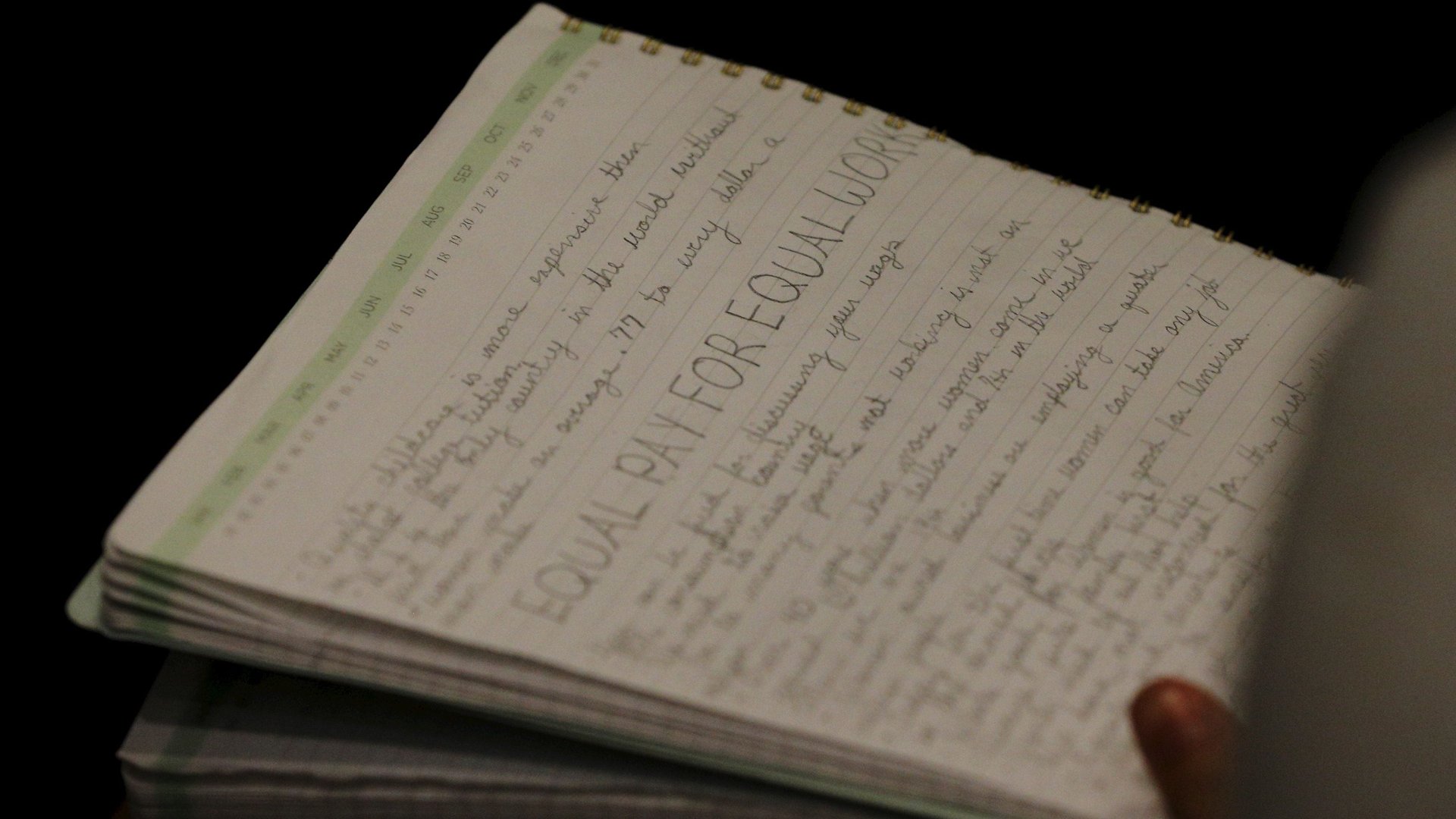Great news, women: Economic parity is only 202 years away
Feminism was the word of the year in 2017, and the pickup continued into this past year, too. More women than ever were elected to US Congress in November; and Ethiopia chose its first female president; the #MeToo movement continued to bring to light to sexual harassment all over the world, in some cases at the cost of jobs for men who abused their power; and attitudes about gender equality are rapidly improving.


Feminism was the word of the year in 2017, and the pickup continued into this past year, too. More women than ever were elected to US Congress in November; and Ethiopia chose its first female president; the #MeToo movement continued to bring to light to sexual harassment all over the world, in some cases at the cost of jobs for men who abused their power; and attitudes about gender equality are rapidly improving.
But lest you get too hopeful about parity for the sexes, here is a sobering update: At this pace, it will still take 202 years for women around the world to witness full economic parity. This is perhaps the most striking of the findings of the latest Global Gender Gap report, released today (Dec. 18) by the World Economic Forum (WEF).
The report, which ranks 149 countries based on their gender equality in several areas, such as education, health, opportunity, or access to work, found that the average distance to parity overall is 68%—in other words, the outcomes for women are currently 68% of those of men. Notably, this is a measure of equality, not empowerment, so it looks at quantifiable results—salaries, for instance, or seats in parliament—rather than less tangible factors such as perception of equality or sexism in society.
The area where the lag is still greatest is political power: Women have access to just 22% of the power men have. The second-biggest disparity is in economic participation and opportunity, where women have 58% of what men have, the WEF says. In other areas the findings are encouraging: in gaps in health and education are nearly closed, though there are still countries where disproportionate numbers of women are illiterate.
The smallest overall gaps between the sexes are found in Iceland, which has closed more than 85% of the gender gap, followed by Norway. The top 10 nations for gender equality also include some surprises, such as Nicaragua, Namibia, Rwanda, and the Philippines. On the whole, Western Europe and North America are the world regions with the most parity, while North Africa is the one faring worst.
Since the WEF’s first Global Gender Gap report in 2006, the change hasn’t been tremendous. The world is only 3.6% more equal in 2018 than it was 12 years ago; the gap was reduced by just 0.03% in 2018, a slower pace than the WEF had anticipated. “All things being equal, with current trends, the overall global gender gap can be closed in 108 years. This is an increase of eight years compared to the estimate from last year’s edition, due to the extremely slow progress registered this year,” the group said in its report.
Interestingly, in many of the top countries for equality in 2018, parity rates actually decreased from the prior year. The gender gap in Iceland, for instance, widened by 2 percentage points from 2017, while in Rwanda it was 1.8 percentage points wider than the rate from last year.
At the current pace, Western Europe would close its overall gender gap in 61 years and South Asia in 70, while it would take North America 165 years, faster only than East Asia and the Pacific, which are set to achieve equality in 171 years.